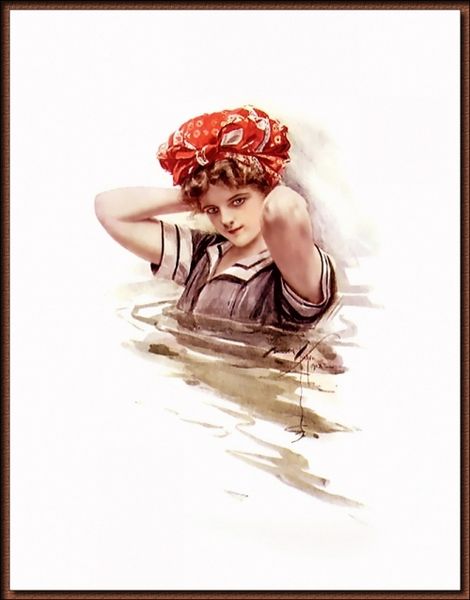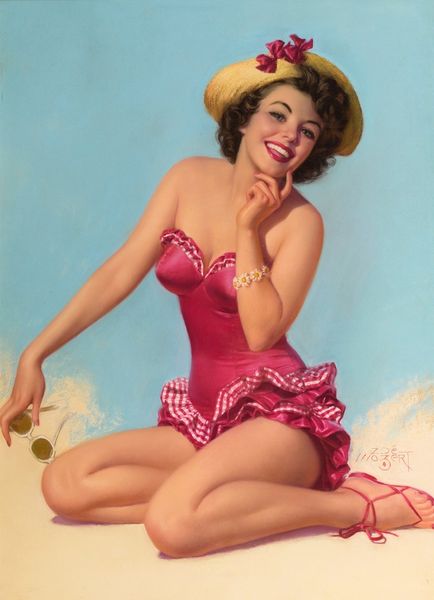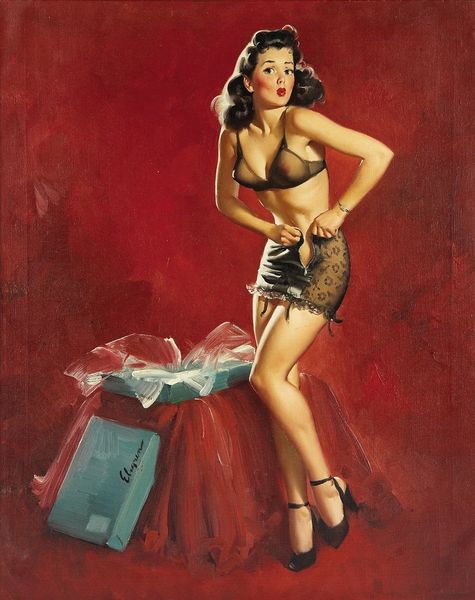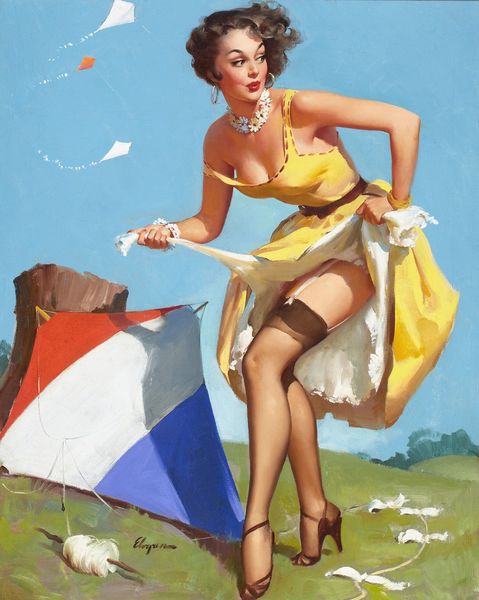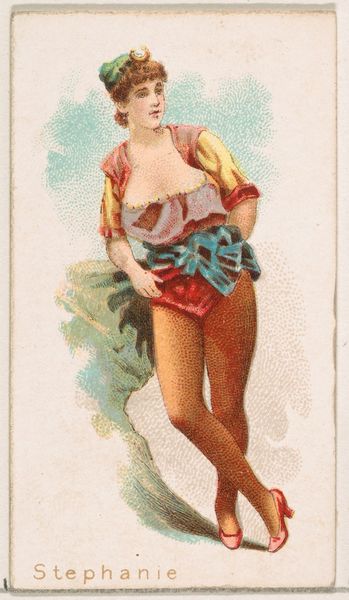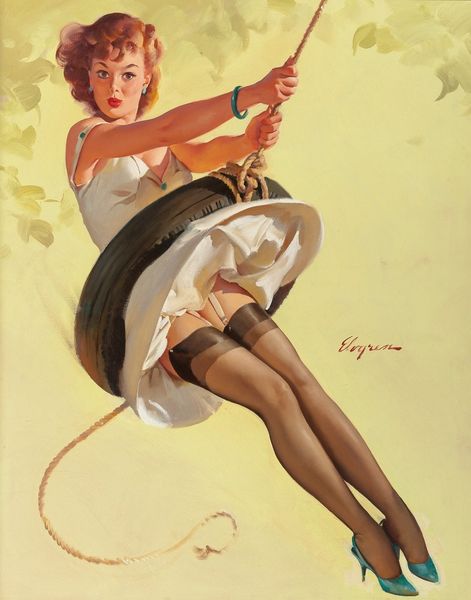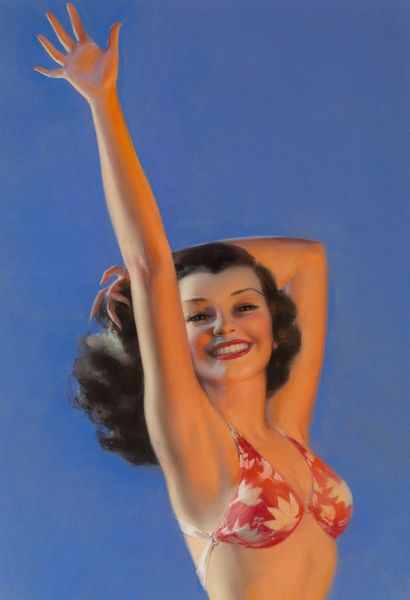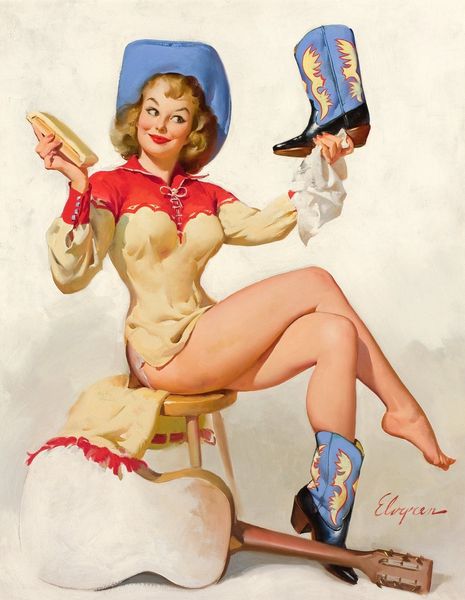
painting
#
portrait
#
art-deco
#
portrait image
#
painting
#
portrait art
Copyright: Rolf Amstrong,Fair Use
Curator: Rolf Armstrong crafted "Nehi" in 1937. What are your immediate impressions? Editor: I find it quite unsettling, actually. There's a forced cheerfulness that feels completely disconnected from any recognizable reality for most people. It’s selling a fantasy. Curator: The symbolic weight feels all very deliberate though: the sailing imagery and its traditional associations with freedom, adventure, the ideal American pastimes, it’s all present. It seems she is a symbol of uncomplicated fun. Editor: But who gets to have that uncomplicated fun? The "girl next door" image masks some complicated socioeconomics at play, considering how images of women are historically commodified to sell products. Also, isn't "Nehi" the soft drink company owned and managed by a known white supremacist? Curator: That's certainly an important part of the context. But Armstrong’s consistent rendering of very rosy cheeks and very red lips across so many of his subjects points to something deeper than any single brand association. There’s a hyper-femininity at play that touches upon beauty ideals from before the first world war through to the 1940s, it appears again and again in his art, even beyond brand partnerships. Editor: I see a sort of manufactured image of whiteness as innocence. The naval details evoke ideas about who protects the country, while the woman’s pose turns this political context into something that serves personal desires. It all has to be unpacked. What’s coded here? Curator: In period artwork, signifiers cluster with intent. It makes us analyze the semiotics of the era’s aesthetic. I tend to view the rosy cheeks as signifying an ideal of health and vitality— a cultural marker to communicate optimism in times of economic struggle. The maritime setting, too, invokes symbols of exploration and limitless possibilities. But yes, your insights highlight this isn’t a universal fantasy. Editor: Perhaps it’s more useful to study this painting with both perspectives, both of our interpretative frameworks, active at the same time, yes? To decode its enduring messages. Curator: Indeed. We understand symbols by understanding them and challenging their cultural meanings and values.
Comments
No comments
Be the first to comment and join the conversation on the ultimate creative platform.

